Embarking on your journey as a photographer can be both exciting and overwhelming. With so many photography terms, settings, and techniques to master, it’s easy to feel lost in a sea of jargon.
Whether you’re capturing your first family portraits, experimenting with landscapes, or trying to get that perfect shot of your pet, understanding the basics can make a world of difference.
In this guide, we’ll break down essential photography vocabulary into simple, easy-to-understand terms, including:
- Basic camera settings
- Essential gear
- Popular photography techniques
- Other key terms every photographer should know
By the end of this blog, you’ll have a solid foundation to build your skills and confidence behind the lens.
Basic Camera Settings Vocab
- Aperture: The opening in a lens through which light enters the camera. Measured in f-stops (e.g., f/2.8, f/16), it controls the depth of field and the amount of light hitting the sensor.
- Shutter Speed: The duration the camera’s shutter is open, exposing the sensor to light. Measured in seconds or fractions of a second (e.g., 1/1000s, 30s), it affects motion blur.
- ISO: The sensitivity of the camera’s sensor to light. Higher ISO settings (e.g., ISO 3200) increase sensitivity for low-light conditions but can introduce noise.
- Exposure: The amount of light reaching the camera sensor, determined by the aperture, shutter speed, and ISO. Proper exposure ensures the image is neither too dark nor too bright.
- White Balance: Adjusts the color temperature of the image to ensure accurate colors under different lighting conditions (e.g., daylight, tungsten, fluorescent).
- Focus: The point where light rays converge to form a sharp image. Autofocus (AF) and manual focus (MF) are common modes.
- Metering: The camera’s method for measuring light to determine the correct exposure. Common modes include matrix, center-weighted, and spot metering.
- Histogram: A graphical representation of the tonal values in an image, showing the distribution of shadows, midtones, and highlights.

Photography Equipment and Gear
- DSLR: Digital Single-Lens Reflex camera, known for interchangeable lenses and optical viewfinder.
- Mirrorless Camera: A camera without a mirror mechanism, offering a compact design and electronic viewfinder.
- Lens: An optical component attached to the camera body, available in various types like prime, zoom, wide-angle, telephoto, and macro.
- Tripod: A three-legged stand used to stabilize the camera for long exposures, landscape photography, or video work.
- Flash: A light source used to illuminate a scene, available as built-in, external (speedlight), or studio flash units.
- Filters: Accessories placed in front of the lens to modify the light entering the camera. Common types include UV, polarizing, and ND (neutral density) filters.
Ready to take your photography skills further? Explore our photographer resource page for expert tips, tools, and inspiration to help you turn your images into stunning, professional-quality prints.
Photography Techniques
- Rule of Thirds: A compositional guideline that divides the frame into nine equal parts to place the subject at intersections for a balanced image.
- Leading Lines: Compositional elements that guide the viewer’s eye through the image, often towards the main subject.
- Depth of Field (DoF): The distance between the nearest and farthest points in an image that appears acceptably sharp, controlled by aperture.
- Bokeh: The aesthetic quality of the out-of-focus areas in an image, often seen as pleasing, circular blur effects.
- HDR (High Dynamic Range): A technique that combines multiple exposures to capture a wider range of light and detail in both shadows and highlights.
- Panorama: A wide-angle view created by stitching multiple images together.
- Macro Photography: Close-up photography, typically of small subjects, using specialized macro lenses to capture fine details.
- Long Exposure: A technique involving slow shutter speeds to capture motion blur in moving subjects, like waterfalls or traffic at night.

Other Photography Terminology
- RAW: A file format that captures all image data from the sensor, allowing for more flexibility in post-processing.
- JPEG: A compressed image format suitable for sharing and storage, with less flexibility for post-processing compared to RAW.
- Aspect Ratio: The ratio of the width to the height of an image, commonly 3:2, 4:3, or 16:9.
- Resolution: The amount of detail in an image, measured in pixels (e.g., 6000×4000) or megapixels (MP).
- Post-Processing: The process of editing and enhancing images using software like Adobe Lightroom or Photoshop.
- Composition: The arrangement of elements within a frame to create a visually appealing image.
Beyond Photography Terms: Turn Photos into Art
You’ve now equipped yourself with the fundamentals of photography terms and definitions that every budding photographer needs to know. From understanding the intricacies of aperture and shutter speed to mastering essential techniques like the rule of thirds and HDR, you’re well on your way to capturing stunning images with confidence.
But don’t stop there. As you continue to hone your skills and develop your unique photographic style, consider taking your art to the next level with high-quality fine art printing services.
At ArtisanHD, we specialize in transforming your photos into museum-quality artwork. Whether you’re an amateur just starting out or a seasoned professional, our custom printing solutions offer the perfect way to showcase your best work.
Our expert team is dedicated to helping photographers of all skill levels bring their creative visions to life. By choosing ArtisanHD, you’re not just printing a photo; you’re creating a masterpiece that you’ll be proud to display.





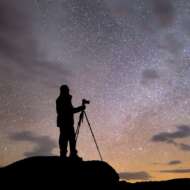

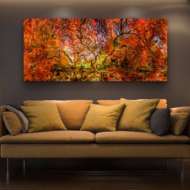
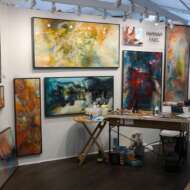
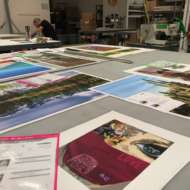
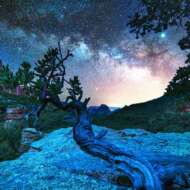
Hi,
Thank you for sharing this wonderful article. All the paragraphs are very informative. All the pictures perfectly go with the article. Thank you again for this article.